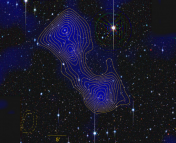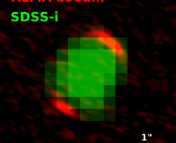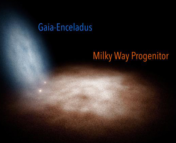Authors: Tom O. Zick, Daniel R. Weisz, Bruno Ribeiro, et al.
First Author’s Institution: Astronomy Department, University of California, Berkeley, CA 94720, USA
Status: Accepted for publication in MNRAS, open access on arXiv
This post was written by Dominic Adams, a 3rd year graduate student in astrophysics at the University of Minnesota. Dominic is studying “clumpy galaxies” in the local Universe, and he also coordinates the summer astronomy outreach program Universe in the Park which hosts public observation nights in parks across Minnesota. In his spare time, Dominic is semi-proficient on the piano and not-at-all-proficient on guitar, though he enjoys both.
Imagine walking into an extremely messy room. Perhaps there are clothes strewn about, or old dishes piled up in a sink, or papers stacked messily in a corner. Now, imagine being asked to describe — as precisely as possible — exactly what took place to create the mess.
This is the sort of challenge that astronomers face in the growing field of galactic archaeology. Galaxies are massive objects and evolve very slowly, so we humans can only see a snapshot of their behavior. From only that snapshot, galactic archaeologists work to determine the entire history of the galaxy, searching for clues about all the major interactions and evolutionary steps that led to its current state.
So far, most galactic archaeology studies’ (for example, this one) have focused on the Milky Way and our nearest neighbors such as the Andromeda Galaxy. This study examines the history of a galaxy that is 4,000 times farther away than Andromeda, at a distance of ~11 billion light years (3/4 of the way to the end of the observable Universe). How was this study possible? And what did the authors find out?
The target galaxy, and its mystery clump
The key to this study’s success is that it focused on a gravitationally-lensed galaxy. Gravitational lensing is a process in which extremely strong gravitational fields, like those from a galaxy cluster or a dense black hole, warp the light of a source behind them and magnify it in the process. This particular gravitationally-lensed galaxy was spotted by the Hubble Frontier Fields survey, and it appears five times larger than it normally would. Lensed galaxies like this are rare, but valuable. They allow researchers to resolve fine structures at much greater distances than they otherwise could.
This particular galaxy was interesting for another reason: it contains a bright off-center clump. For most galaxies, we only expect concentrated bright spots like this in the exact center (at the central bulge). To verify this odd clump was real, the group fit the galaxy with a common model known as a “Sersic profile. The Sersic profile matches the light distribution of a typical spiral galaxy quite well. However, as shown in Figure 1, it could not account for the light from the off-center clump, the authors had to treat it as a separate source of light.
To learn more, the team acquired 6 hours of time on the Keck/MOSFIRE spectroscope in Hawaii to observe the clump. They found that there was a significant hydrogen-alpha emission line in its spectrum — strong evidence that the clump is actively forming stars. Using this data in conjunction with its Hubble imagery, the team modeled possible star-formation histories that could have resulted in such a structure. From these models, they estimated that the clump’s stellar mass was between 100 and 300 solar masses, as compared to about 10 billion solar masses for the galaxy.
In short: This clump is a massive, highly star-forming substructure, quite unlike anything we see in nearby galaxies!
Digging for the clump’s origin
Giant, star-forming clumps like this are not uncommon in the early universe. However, they are very rare locally, which makes them difficult to study. In general, there are two accepted theories on how clumps like this can form. The first is that they can form within their host galaxies — known as in-situ — when a large cloud of gas collapses, and the second is that clumps can form as independent objects outside their hosts — ex-situ — and only merge with their hosts later. Unfortunately, this clump’s origin is uncertain with the current data, but the authors lay out a few convincing reasons why it may be ex-situ in origin. For one, its mass is quite a bit larger than expected for clumps that form in-situ. When compared to a system of local galaxies, the clump is a hundred times more massive than this system’s largest star-forming clumps combined. The clump’s location (near the galaxy’s center) is also unusual for in-situ clumps. Finally, this clump is isolated, and a galaxy that can form one in-situ clump should be able to form more.
The clump’s mass, its location, and its isolation all point to an ex-situ origin for this clump, though the team lacks the evidence to confirm it. Something walked into this galaxy and made a mess, but it’s still not 100% clear what it was. The authors argue that with future observations by the James Webb Space Telescope, archaeological expeditions like this one will be far more likely to succeed.
Edited by: Haley Wahl
Featured image credit: Zick et al. 2020




